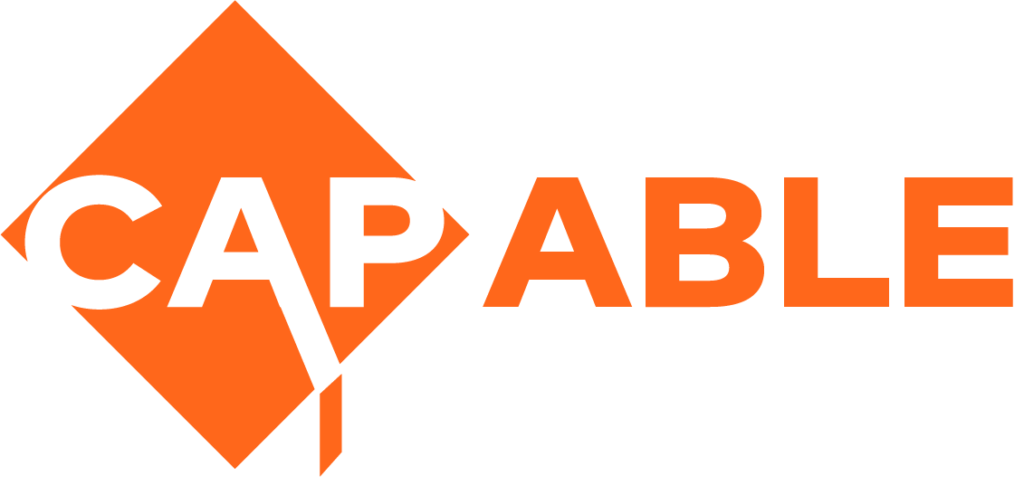INCLUSION - EXCLUSION
The concepts: Exclusion, Segregation, Integration, and Inclusion all have in common, that they are related to ideology, practices, and policies. In the context of education, these are key concepts that should be understood as they relate to a variety of approaches to inclusion of a number of marginalized populations, including people with disabilities.
We explain each concept below, giving specific examples that relate to education:
What can you find in this section?
Exclusion
Exclusion as a concept begins from the perception of an “us” and a “them”. Where “us” refers to a majority group/ gender/ ideology/ level of body functionality/ orientation/ citizenship status/ race, etc. and “them” is everyone else who does not fit that the designated norm.
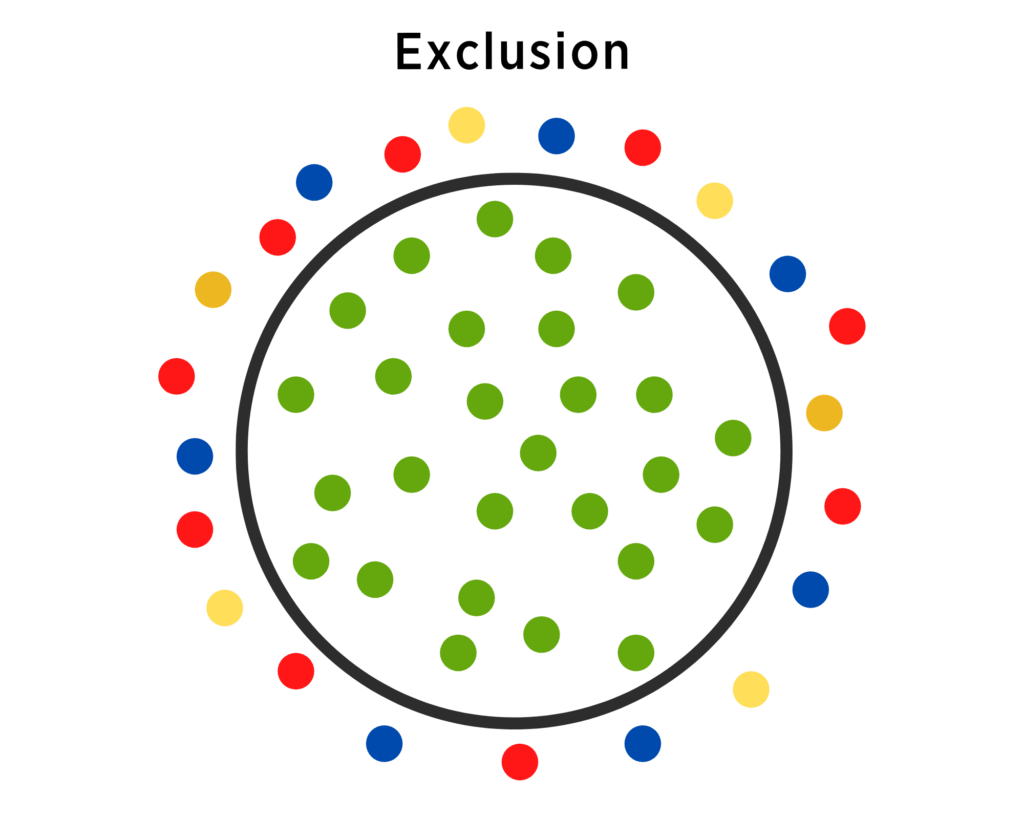
For people with disabilities, not being able to perform activities or contribute to the level of the designated norm in relation to body functionality, makes them outsiders.
As a result, negative attitudes towards people with disabilities from others in society exist, derogatory terms are used to refer to them, and a number of policies exclude them from participation in society as well as systems and processes that do not cater to their needs.
For example, in relation to people with disabilities accessing education, exclusion occurs when little to no effort is made to ensure that people with disabilities can access the same classes or education as other students without disabilities, and their specific learning needs are not taken into account.
Segregation
Segregation refers to the separation of one thing from another. In applying the concept of an “us” and “them”, emphasis is laid on the separation of groups based on ideology/gender/ level of body functionality/citizenship status/race, etc.
These groups are kept distinct from each other through a variety of policies, systems, and processes.
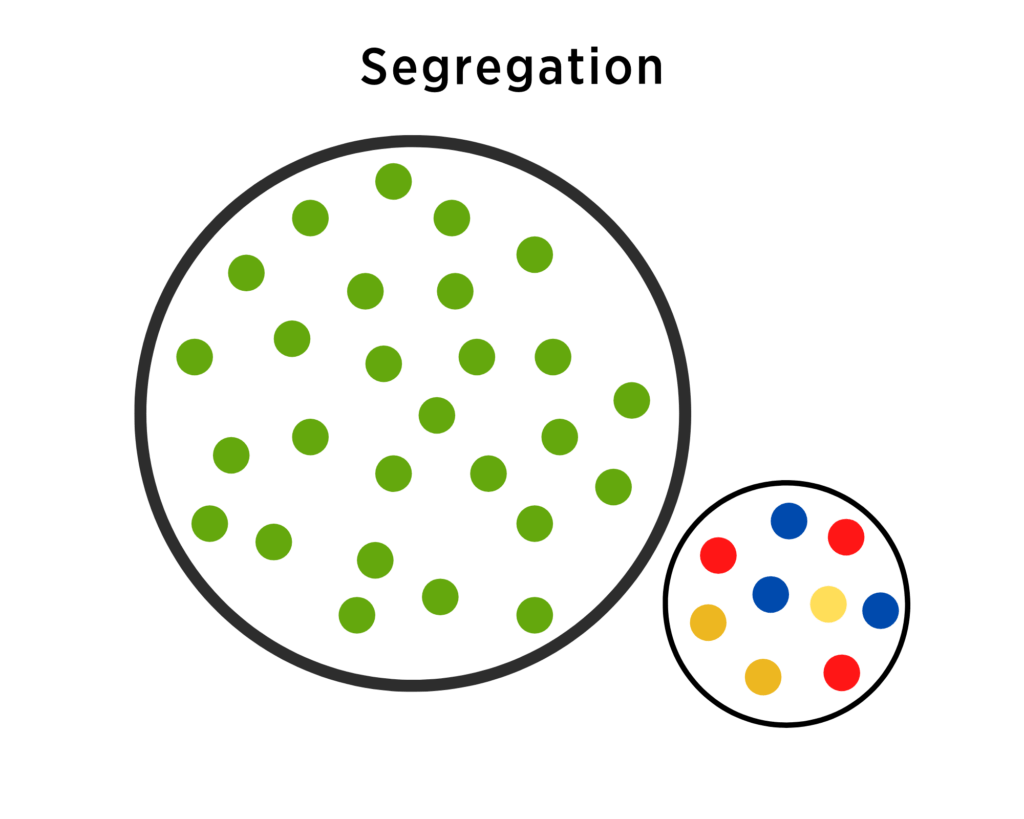
For example, in relation to people with disabilities accessing education, segregation occurs when emphasis is laid on providing education through special needs schools. Little to no effort is made to ensure that people with disabilities can access the same classes or education as other students without disabilities. Their learning needs are considered but only catered for through these specialized education and training courses.
Integration
Integration is a step towards inclusion where while different groups coexist within the same society, the idea of a designated norm still exists which continues to alienate certain groups from the majority.
As a result, inclusion of an individual or group is contingent on how well they assimilate or how close they are to the “designated norm”.
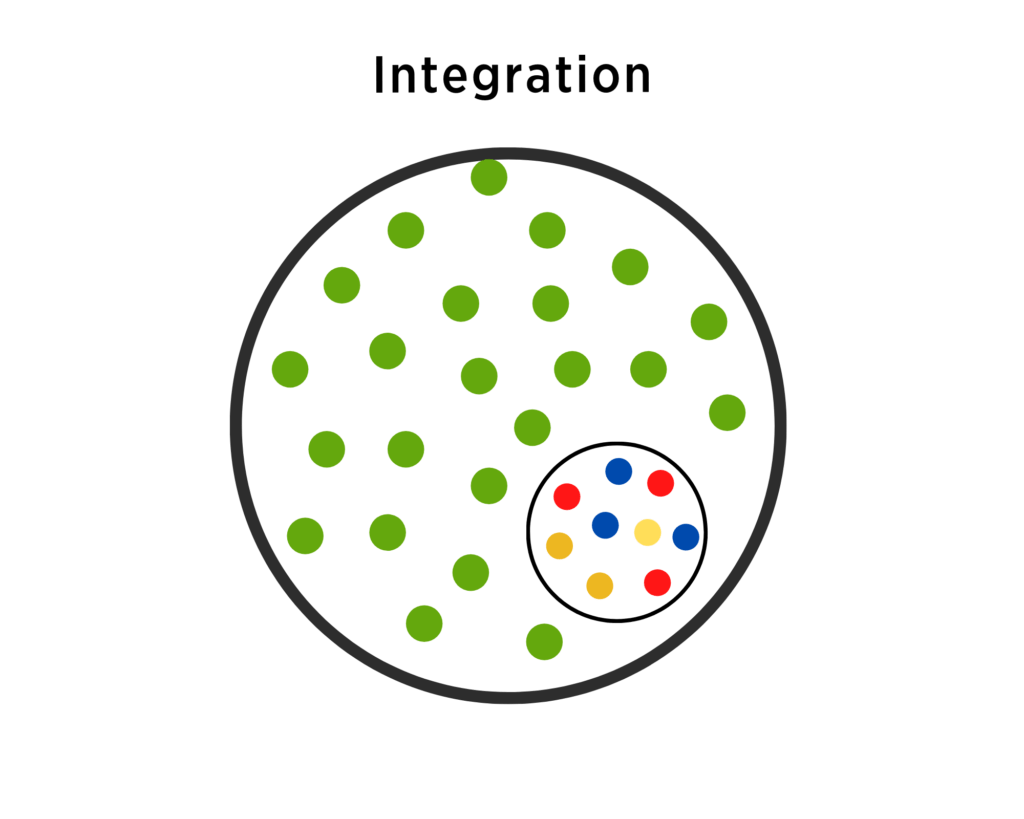
The further one group is from fitting within the policies, systems, and processes designed for the majority, the more segregated they are.
For example, in relation to people with disabilities accessing education, integration occurs when people with disabilities, despite going to the same school as their peers without disabilities, attend separate, special classes from them. People with certain types of impairments with less complex inclusion needs or those with less severe impairments may get to join mainstream classes.
Inclusion
Inclusion as a concept often gets confused with integration, however, it goes further than just different groups co-existing within the same society.
Inclusion works to deconstruct the concept of a designated norm, allowing more room for a wider range of groups to accept each other’s differences and relate better with each other as equals.
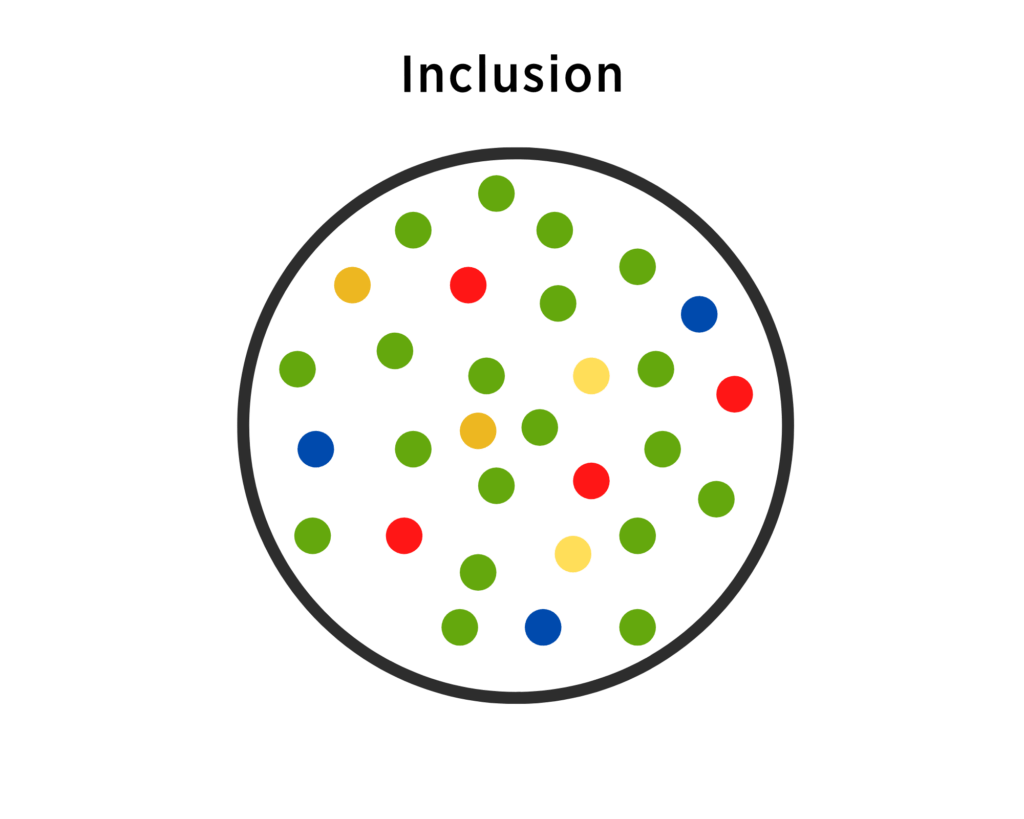
While groups based on ideology/gender/level of body functionality/orientation/citizenship status/race may still exist, policies, systems, and processes adequately cater to their varied needs.
For example, in relation to people with disabilities accessing education, inclusion occurs when effort is made to ensure that they go to the same school as their peers without disabilities, that they are able to attend the same classes or a standard level of education that is comparable. Mainstream schools are able to cater to their learning needs and they have a variety of educational options and opportunities to pick from.
What inclusion means for your institution/ Scholars Program
Inclusion as a Scholars Program requires a range of deliberate efforts to ensure that young people from a wide range of identities and groups can fully participate and benefit from the Program. It also means moving beyond inclusion within the Scholars Program but ensuring that lessons learned through the Program spread to the rest of the institution and beyond; playing a part in creating a more inclusive, enabling and supportive society for marginalized populations including people with disabilities.
Achieving this requires more effort, buy-in and support. CapAble has a range of resources to enable you to conceptualize this vision further as an institution. You can also contact us directly for individualized support.
There may be a lot to do, but with drive and commitment, we will achieve it!
Other Links
RECEIVE OUR UPDATES
- →
-
Chat with Us!
Do you have a comment, suggestion, question or request for more information? Let us know!
